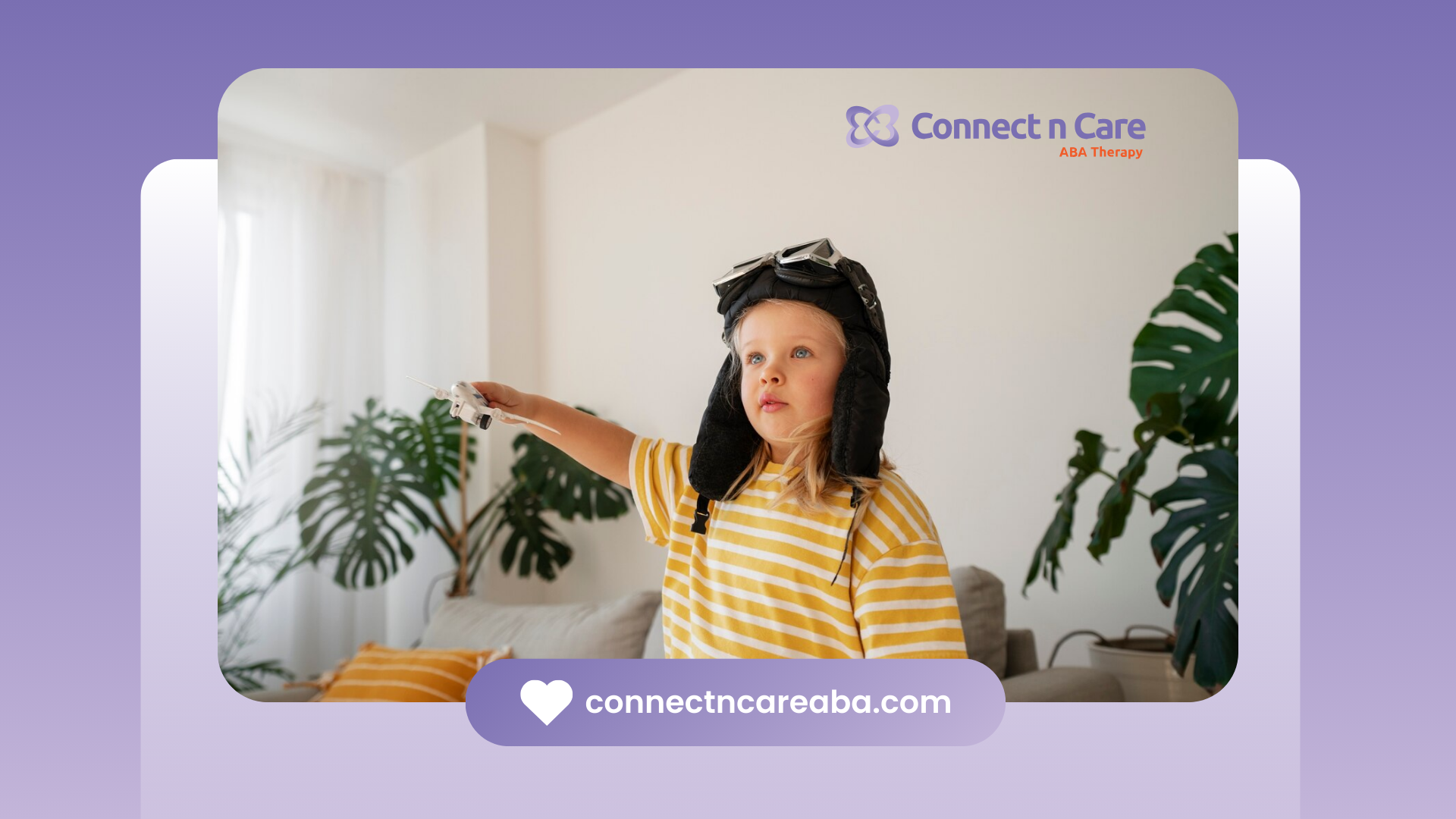In ABA therapy, the idea of Natural Environment Teaching (NET) is all about helping kids pick up new skills in their usual surroundings. Instead of sticking to old-school ways, NET uses what happens day-to-day and where a child feels most at home to boost how they behave. Through fun activities and regular stuff they do from morning till night, this method makes learning stick because it's more interesting and works better for them.
It leans heavily on giving rewards for good behavior and letting the learner take the lead. This way of teaching pays close attention to what each kid likes doing best while checking on their progress often. The big goal here is to make sure these new behaviors can happen anywhere in a kid’s life, not just during special learning times.
What is the Natural Environment Teaching Method?
The Natural Environment Teaching (NET) approach in ABA therapy is all about learning skills where they naturally happen. What is a natural environment in ABA? Some examples are at home or on the playground. This way, it helps what's learned to be used in different places and situations. By focusing on moments started by the learner during everyday tasks, this method boosts behavioral skills in a really practical way.
The Concept of NET in Applied Behavior Analysis
In ABA or behavior analysis, there's this method called Natural Environment Teaching (NET). It's all about teaching kids new skills in their usual surroundings during regular day-to-day stuff. The idea is to use what the child naturally likes and does as a foundation for learning more.
With NET, it’s important to keep checking on progress, letting the learner lead sometimes, and making sure teaching methods really fit what each kid needs. By using NET in ABA therapy sessions, therapists are working towards helping kids get better at behaving appropriately not just while they're being taught but also out in the real world. This way of doing things aims to make sure these learned behaviors stick around outside of those structured learning times.
The Importance of NET in Enhancing Behavioral Skills
In ABA therapy, teaching kids in their everyday surroundings, known as Natural Environment Teaching (NET), is super important for improving how they behave. By using the places and activities that are part of a child's daily life, NET helps them learn new things more naturally. This approach focuses on boosting social and communication skills among other crucial abilities by applying them in real-life situations.
It aims to make sure these behaviors stick no matter where the kid is or what they're doing. With an emphasis on cheering positive behavior and tailoring learning to each individual, NET proves really effective at helping those with developmental challenges get better at interacting with others and handling various situations across different settings.
Benefits of Natural Environment Teaching
In ABA therapy, teaching in the natural environment really helps out. By having learners use their skills during everyday activities, they get better at things that matter in daily life. This approach uses good vibes to encourage learning, along with special techniques like pivotal response training and incidental teaching. For folks on the autism spectrum, it's a great way to boost how well they talk and interact with others. Since this method makes sure these important skills are practiced where they naturally happen, it helps learners truly master what they need to know.
What are the Differences between Naturalistic Teaching ABA and Natural Environment Teaching?
In ABA, naturalistic teaching is all about learning during everyday activities. On the other hand, Natural Environment Teaching (NET) makes sure to turn moments in a learner's usual surroundings into chances to learn. While both approaches are designed to improve skills, they vary by focusing on different settings and methods for instruction within the natural environment of the learner.
To know more about Naturalistic Teaching ABA, please refer to this article: What is Naturalistic Teaching ABA Used for ASD Treatments?
What is an Example of Naturalistic Teaching and Natural Environment Teaching?
One way to teach in a natural setting is by getting a kid involved in make-believe games at the park, aiming to boost their social skills. On the other hand, teaching within everyday surroundings means slipping learning chances into regular activities such as during meals, which helps with improving how they use language.
Key Principles Behind Natural Environment Teaching
In ABA therapy, the main ideas behind Natural Environment Teaching (NET) are all about making learning fun and part of everyday life. It's like when you learn something new while playing or doing your usual activities. NET is great because it lets kids start the learning process themselves during these teaching moments that happen in their normal surroundings.
By focusing on what each kid needs, NET helps them pick up important skills more easily. Plus, by using things like rewards and applying what they learn to real-life situations, it makes sure everything fits right into a child’s world. This way, not only does learning stick better but it also becomes easier for kids to use their new skills in different places and times.
Learning Through Play and Daily Activities
Natural Environment Teaching, or NET for short, is all about making learning fun and part of everyday life. It's like when you learn something new by doing your favorite activities or during your regular day-to-day stuff. This way, kids get to pick up new skills in places they feel comfortable and happy—right where they play and live. By using what a child loves to do as a way to teach them, NET helps keep their attention better and makes it easier for them to use what they've learned in various situations outside of just learning time.
With this method at the heart of ABA therapy, children can build on important abilities naturally while teachers check on their progress smoothly without making it seem like a big deal. Learning through playing around and going about your daily routine lays down the foundation for growing key skills effectively within ABA practices.
Emphasizing Learner Initiation in Teaching Sessions
In Natural Environment Teaching (NET), it's really important to let the learner start things off in their learning sessions. By doing this, we help them become more independent and take an active part in what they're doing. This method works well with the usual surroundings of the learner, making it easier for them to use these skills in different places.
When learners get to choose what activities they do, it tells us a lot about what they like and what interests them, which helps make teaching methods more tailored and effective for each person. This kind of involvement also boosts their motivation and gives them a feeling of control over learning new skills.
Implementing NET Strategies for Effective Learning
Finding ways to teach in the natural environment and adjusting how we do it for each person are really important steps when using Natural Environment Teaching (NET). By making the most of what's around us and what learners like, ABA therapists can make learning more relevant. This method makes sure that kids learn skills as part of their everyday activities, which helps them use these targeted skills more broadly in their daily lives.
Identifying Opportunities for Teaching in the Natural Environment
Finding chances to teach in the natural environment means spotting moments you can teach during normal day-to-day stuff, in places where the learner feels at home. By weaving targeted skills into settings like their house or neighborhood, we create natural opportunities for learning new things. This way involves always checking on progress and mixing what the kid likes and does every day into teaching, which helps make picking up new skills not just easier but also more relevant.
Tailoring Teaching Methods to Individual Needs
In ABA therapy, focusing on what each learner needs is key. With Natural Environment Teaching (NET), the idea is to look at what makes each person unique—their strengths, things they find tough, and what interests them—and then shape teaching methods around that.
This way of doing things helps learners get more involved and do better because lessons are designed just for them. By being flexible in how they teach, instructors can make a big difference in helping someone grow through NET by paying attention to their natural environment and individual learning journey.
The Role of Reinforcement in NET
In ABA therapy, understanding different kinds of reinforcement is key. When we talk about positive reinforcement, think about giving someone praise or a reward to help them get better at something in their everyday life. NET uses these ideas by offering rewards right away when you're going through your day-to-day activities.
This way, it helps people learn new things and keep growing by making sure the ways they are taught match what they need. So basically, using the right kind of encouragement in ABA can really help shape good behaviors and lead to great results for anyone learning new skills.
Types of Reinforcement Used in NET
Natural Environment Teaching, or NET for short, is all about using what comes naturally to help kids learn and grow their skills. Instead of the usual ABA therapy ways that depend on things like stickers or points to get kids moving in the right direction, NET goes for stuff that happens naturally. For instance, when a kid does something great like asking properly for a toy, they immediately get to play with it as a reward. This way of doing things makes learning more fun and real for them because the rewards mean something directly related to what they just did.
With positive reinforcement being key here, it's not about handing out random prizes but more about giving feedback that feels good because it ties back directly to whatever was achieved. And then there’s this cool part called pivotal response training (PRT). It zeroes in on really important parts of growing up—like how well you talk with others or make friends—and gives those areas an extra boost. By focusing on these big-deal skills through PRT within NET practices, kids don't just learn one thing; they pick up lots of other helpful behaviors along the way too.
This approach doesn’t only stick better but also has a bigger impact overall on ABA therapy and skill development since everything learned feels relevant and useful right away.
Strategies for Effective Reinforcement
In teaching kids in their natural environment, it's super important to keep them interested and help them learn new skills. One of the best ways to do this is by using positive reinforcement. This means when a kid does something good, like following directions or speaking nicely, they get rewarded or praised. It really helps motivate them and keeps them focused on learning more. For each child, what counts as a cool reward can be different - some might love extra playtime with their favorite toy while others might enjoy getting high-fives or kind words.
By picking rewards that mean something special to each learner, teachers can make learning fun and rewarding for everyone involved. With immediate rewards given right after a good behavior happens, kids start connecting the dots between what they did well and the awesome thing that follows. This makes it more likely they'll keep up the good work in future lessons too! So basically by sticking with these smart strategies for giving out positive vibes during lessons in everyday settings, therapists are setting up learners for better engagement and faster skill development.
The Impact of NET on Different Areas of Development
Natural Environment Teaching (NET) really makes a big difference in how kids grow and learn. By showing them the ropes right where they'll actually use what they're learning, NET helps kids pick up practical skills that come in handy every day. For starters, with NET, communication gets a huge boost. Through fun play and everyday chats, it works wonders on improving talking abilities, social know-how, and just getting better at chatting with others.
On top of that, when it comes to making friends and hanging out comfortably with people around them—skills we call socialization skills—NET is super helpful there too. It gives lots of chances for practice which is especially great for kiddos who might find this stuff tough because of developmental disabilities.
Enhancing Communication Skills Through NET
Natural Environment Teaching (NET) works really well in helping people who are getting ABA therapy to get better at communicating. By making learning fun and natural, NET helps improve all kinds of communication skills, like talking and interacting with others. Kids get to learn through play and real-life interactions, which lets them practice their communication in ways that matter to them.
With NET, the learning is led by what the child finds interesting, so therapists go along with what keeps the kid interested and eager to communicate. This way of including things kids like in how they learn makes everything feel more natural and fun for them. Not only does this method help kids talk better but it also teaches important social behaviors such as taking turns, asking for things properly, and having conversations with others. In short, NET offers a great way for individuals going through ABA therapy to boost their ability to communicate effectively.
Promoting Social Interactions and Relationships
Natural Environment Teaching, or NET for short, is super important when it comes to helping people get better at making friends and building relationships, especially those who are getting ABA therapy. By using the world around us and the normal day-to-day stuff we do, NET gives us lots of chances to work on social skills.
Think about hanging out with friends, spending time with brothers or sisters, or just being part of what your family does every day; these situations let kids practice how to interact socially in ways that really matter to them. With NET, therapists can sneak lessons on social skills into all kinds of regular activities. This way learning feels more natural and makes sense because it's happening in real-life settings they're familiar with.
For example during playdates or while chatting at dinner time children learn by doing things like saying hi properly taking turns talking sharing toys etc The idea here is that practicing these skills where they naturally happen helps kids understand how to use them outside their homes too.
In a nutshell, this approach not only boosts their ability to be sociable but also connects deeply individuals facing developmental challenges giving them the tools needed to thrive socially Whether it is mastering simple greetings or engaging in meaningful conversations everything is done through the lens of everyday life which ultimately supports forming lasting bonds with others
Conclusion
Natural Environment Teaching (NET) in ABA therapy is a really effective way to help improve behavior skills by using everyday interactions. It's all about starting with what the learner wants to do and making sure the teaching fits them perfectly, which helps learning stick because it happens in situations they face every day. By using things like rewards and fun activities, NET makes a big difference in how well someone can communicate, get along with others, and grow overall.
Getting why NET matters and seeing how it's different from other ways of doing ABA is crucial for making it work well. Parents can play a big part too by finding chances to teach during normal daily stuff at home. When you bring NET ideas into your routine, you're setting up for real improvements in behavior skills and learning new things.
At Connect n Care ABA, we believe in harnessing the power of everyday experiences to help children with ASD thrive. Our therapists are experts in Natural Environment Teaching (NET) and use this approach to seamlessly integrate ABA therapy principles into your child's daily routines and play activities.
This not only makes learning fun and engaging but also promotes generalization – the ability to use newly acquired skills in different situations. We collaborate closely with families to create a personalized NET program that fosters your child's development in a supportive and familiar environment. Contact Connect n Care ABA today to schedule a free consultation and see how NET can help your child unlock their full potential.
Frequently Asked Questions
What Makes NET Different from Other ABA Techniques?
NET stands out from other ABA methods like discrete trial training (DTT) or incidental teaching in a few key ways. For starters, while DTT happens in very organized and strict sessions, NET is all about using the learner's everyday surroundings. By doing things this way, it makes it easier for learners to apply what they've learned across different places and situations because everything takes place in their natural environment.
There's also a common misunderstanding that NET is just about playing without any real plan behind it. But actually, even though learning happens through play and daily activities within the natural context, there are still clear teaching strategies at work here to make sure lessons stick effectively.
How Can Parents Support NET at Home?
Parents are super important when it comes to helping with Natural Environment Teaching (NET) at home. Keeping things consistent is really the secret sauce here, and parents can do this by weaving what's learned in therapy into everyday stuff they do with their kids.
By setting up a routine that’s both structured and encouraging, they make sure there are plenty of chances for their child to practice these new skills in different settings. On top of that, getting other family members involved means everyone's on the same page, making the learning environment even more supportive for the kid.
What is the difference between natural environment teaching and incidental teaching?
With incidental teaching, it's all about boosting communication skills in kids who can already talk a bit. On the other hand, NET is more about helping learners pick up various skills right where they naturally hang out and making sure these new abilities work well in different places and situations.









